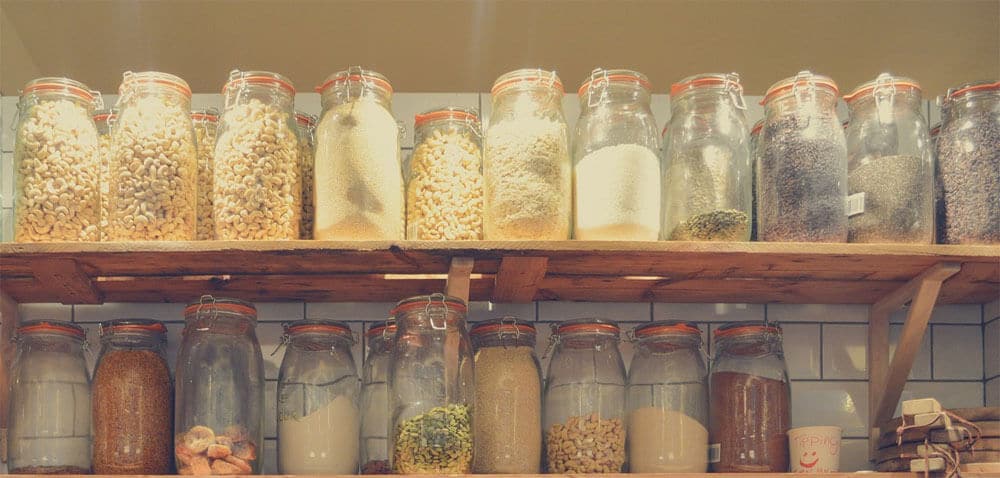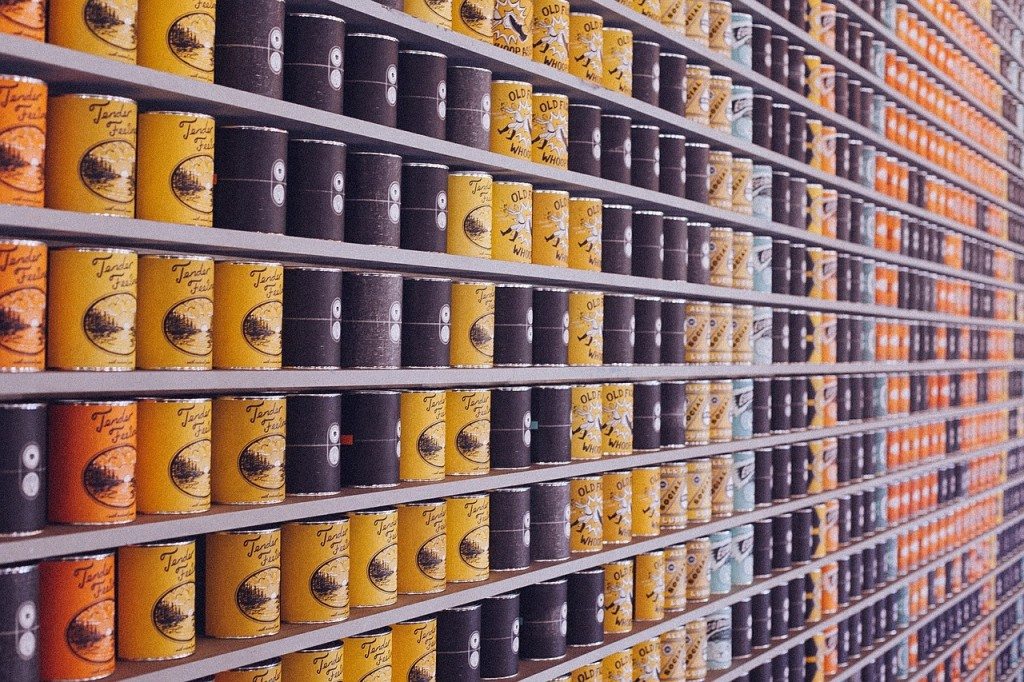Besides water, food and shelter rank top among the most important requirements in a time of crisis. It does not matter whether the crisis will last a couple of days or for months, even years. Once you take care of shelter and water, your next focus would be packing-up lots of food.
You can pack up lots of food but your efforts may amount to nothing if you do not know the basics of emergency food storage and resupply. It may appear obvious to many who may take this issue for granted. Imagine what would happen to you and your loved ones if your food reserves were to run out or go bad.
Why Is Proper Food Storage Important?

In a disaster or off-grid situation, food processing industries and grocery stores are in jeopardy and may not operate. The food you have in your home could only feed you and your family for only a couple of days. If you did not put in place the right storage mechanism, you could be facing cruel starvation right in the face.
Even if you stored enough food but you did not do it properly, you could suffer from diseases caused by eating contaminated foods. Poor storage might also expose reserved food to elements such as heat. This could alter their taste and smell making them hard to eat.
Proper food storage is therefore important because it enables you to store food for long periods (6 to 12 months). It can also allow you to store your food in a way that will keep them fresh and tasty for the entire period of the emergency. You also get the chance to store food to account for the caloric and nutrient intake of everyone caught up in the SHTF scenario.
What Should You Store?
Not all foods can be store for long periods. However, you still have various options to choose from depending on your taste and preferences. Here is a descriptive list of some of the best foods for storage:
- Canned foods: Canned foods are perhaps the most preferred when it comes to storage for survival. The obvious reason is their long self-life. Some brands and made to stay fresh to several years. Many of them are also formulated with desirable caloric profiles.Take for example a tin of kidney beans: it contains over 700 calories. Canned food can range from vegetables to fruits to meat products and more. They are so convenient because they are ready-to-eat foods. You do not have to cook them to be edible.
- Nuts and seeds: Nuts and seeds are similar in many ways to canned foods. They may have desirable caloric content and nutritional values. Most of them are capable of staying fresh for very long periods. This makes them ideal for long term storage of up to one year.Since they are fresh foods, you will no need to vacuum-packed them for longer-term storage. However, you might want to be careful about insects such weevils that feed on dried nuts and seeds. They can limit their shelf-life.
- Dried foods: Reducing the moisture content of foods can give the extremely long shelf-lives. However they may not be able to last through the entire period of crisis. It may then be advisable to prepackage them nicely to limit their degradation over time.Examples of dried foods suitable for long term survival include beans, assortments of dried fruits, floor, pasta and more. You can check with nutritionist which foods do well in dried state. You can also research on how to repackage them to further improve their shelf-life.
- Dried ready meals (MREs): MREs are better used as additions and not core constituents in your survival food reserve. They fit for use as fast, high-calorie meals. They also store well for extended periods. The commonest examples of MREs include dairy shake, chilly with beans, veggie burger in BBQ sauce, chicken fajita tortilla, cheese spread and more. Make choices based on your taste and preferences.
- Powders and pills: This category of foods may provide you with incredibly high calories. They are better used as supplements to your diet. Powders and pills are extremely long life but they have expiry dates. Best examples are protein powders, fish oil supplements, and vitamin pills.
How to Store Your Food
Three factors would determine how you store your food for long term. They include humidity, temperature as well as atmospheric oxygen. Here is a brief description of each of these factors.
- Temperature: Bacteria, yeast and other microorganisms multiply faster in higher temperatures. This increases the rate at which stored food degraded. It is the reason why most food cans are labeled: store in a cool dry place. Our advice is that you store your food in a place that is as cool as possible. A simple method to determine the storage temperature is the Q10 temperature coefficient. A decrease of about 18 degrees Fahrenheit wills double the shelf-life.
- Humidity: Humidity measures the level of moisture in air relation to its optimal water holding capacity. The latter is referred to as full saturation. So, for example, if the optimal amount of water that air in a particular space could hold is, say 100 g and it is currently holding 20 g then the humidity is calculated to be at 20%.Similar to the effect of temperatures on microbial activity, higher humidity will lead to faster degradation of stored food. The humidity in most home is just round 10 percent which is a good number.
- Atmosphere: Almost all living organisms that inhabit the world require oxygen to live. Airborne micro-organisms too require oxygen to live and multiply. Low oxygen levels will suppress their multiplication. Complete lack of it is death sentence to them. So, if you can reduce the amount of oxygen your stored foods are exposed to, do it to limit food decay.Based on the information above, there are various ways to ensure your food remains fresh and best for human consumption. Here are the most preferred methods because of their efficacy:
- Vacuum packing: sealed, airtight plastic bags keep air and moisture out of the package to reduce the rate of food decay. Products such as foodsaver are ideal and inexpensive.
- Airtight containers with oxygen removal: A popular way to improve the shelf-life of foods is to store them dry in an airtight bucket. The bucket must have an airtight seal and with oxygen remover or absorber added into the bucket. It creates nitrogen-rich environment that discourages the flourishing of bacteria and other microorganisms.
- Canning: This is done in food processing industries where cooked food is heated in air-tight jars to kill and eliminate any bacteria. The method is very simple and highly effective. Canned food can last upwards of 3 years.

Resupplying
The methods of food storage we have already discussed can only last you for so long. The most assured way to ensure you full food secure for emergencies is to set up a long term, sustainable supply through cultivating it.
It may sound easy but that is far from the truth. You will have to adopt the right techniques to ensure you garden produces sufficient food all seasons. You must do everything right from deterring pest and diseases to maintaining and replenishing your soil with organic manure. The details of plant husbandry are beyond the scope of this article.
